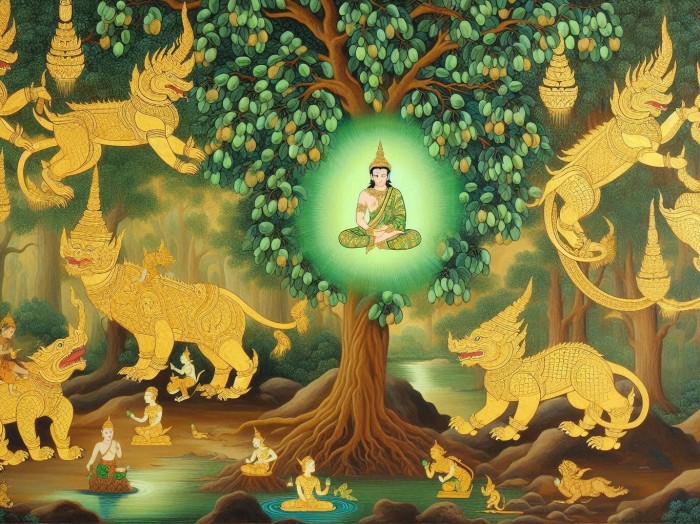
In the deep traditions of Thai folklore and religious thought, the figure of the Pra Ruesi, or hermit sage, stands as a powerful symbol of wisdom, spiritual energy, and moral authority. The Pra Ruesi is not merely a character from old saztories, but a bridge between the human world and the world of the divine. To study the stories of the Pra Ruesi is to dig into the roots of Thai culture, religion, and philosophy, which have been handed down through generations since ancient times.
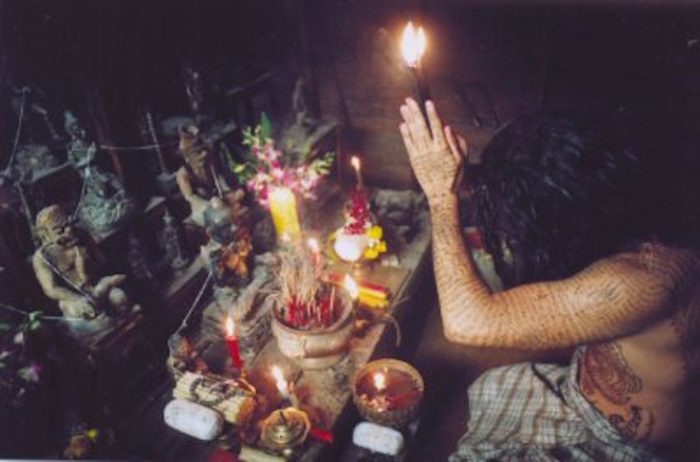
The word Ruesi itself comes from the Pali and Sanskrit term Rishi, meaning seer or one who knows. This reflects the qualities of those who have practiced deep meditation and asceticism until they attain extraordinary insight. In Hindu tradition, the Ruesi is the composer of sacred hymns, receiving divine knowledge through mystical concentration. The Pra Ruesi is thus seen as a medium between humans and the gods, a person who brings wisdom and sacred power from the heavens to earth. Through their efforts
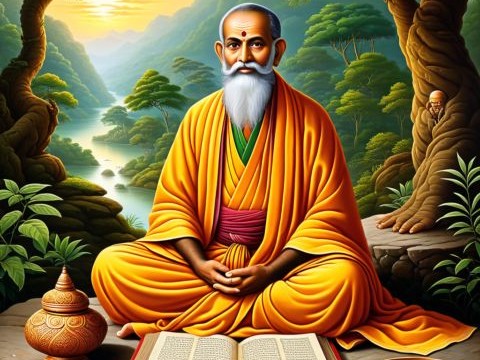
Pra Ruesi are able to access knowledge and power that ordinary people cannot reach. This role as a mediator allows the transmission of sacred knowledge to humans in the form of prayers, teachings, and even the arts. This is a foundation not only of Hindu religious systems, but also of Thai folk beliefs, shaping the way people live, heal, and seek prosperity.

In Thai literature and tradition, the Pra Ruesi often appears as a teacher, a master who imparts knowledge in many fields, such as music, magical arts, medicine, and performance. The Pra Ruesi is a symbol of knowledge and ability, as well as a spiritual force within the natural world. The Pra Ruesi also guides people in morality and ethics, showing the way to live well and helping those in need.
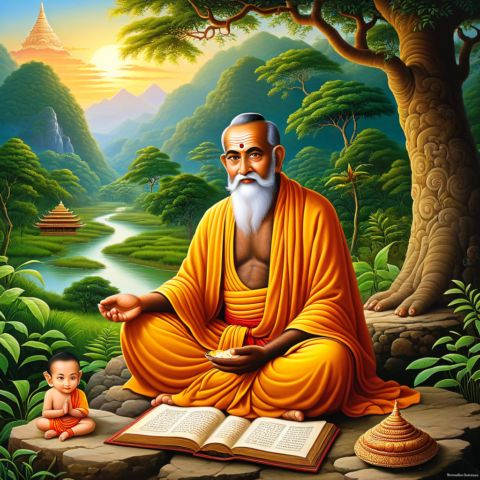
Rishi Kaṇva Compassionate Sage
The Pra Ruesi is both a teacher and a protector, reflecting the adaptation of Indian beliefs into the Thai context. While Indian tradition emphasizes the Pra Ruesi as a seer connected with the Vedas, Thai tradition expands this role to include practical help in daily life, whether as a teacher or as a healer. This belief is reflected in the worship of Pra Ruesi for success in work, luck, and health.

Ancient texts describe many types of Pra Ruesi, such as the seven original Pra Ruesi born from Brahma, as well as Brahma Ruesi, Deva Ruesi, Human Ruesi, and Demon Ruesi. There are also related terms, such as Yogi, meaning one who practices austerity in the forest, Muni, meaning a sage who has mastered sacred knowledge, and Siddha, meaning one who is firmly virtuous. The variety of types shows the complexity and evolution of the Pra Ruesi concept in society. Some are called the first Pra Ruesi or the children of Brahma, showing their sacred status and foundational role in the transmission of knowledge.

Among the many legends, the story of the 108 Pra Ruesi stands out. In Thai tradition, it is said that there are 108 Pra Ruesi, often referred to as the Old Masters or Grandfathers. The number 108 is symbolic, linked to both Buddhist and Hindu ideas.
In Buddhism, it may refer to the 108 defilements of the mind. The fact that legends mention 108 Pra Ruesi, but not all texts list them by name, points to the symbolic nature of the number, representing abundance, completeness, and the totality of knowledge and virtue overseen by the Pra Ruesi.
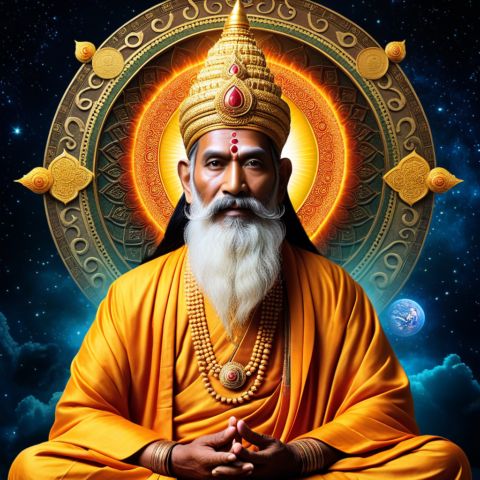
To worship all 108 is to pay respect to all the teachers, acknowledging the idea that the Pra Ruesi is the grand master of every branch of knowledge, from elemental sciences, medicine, herbs, magic, and charms, to arts of attraction and kindness.

Each Pra Ruesi is believed to have different powers and areas of expertise. Some are masters of meditation, some of healing, some of magical arts, and some bestow blessings of popularity or charm. Many are said to have received their names or blessings from Shiva.
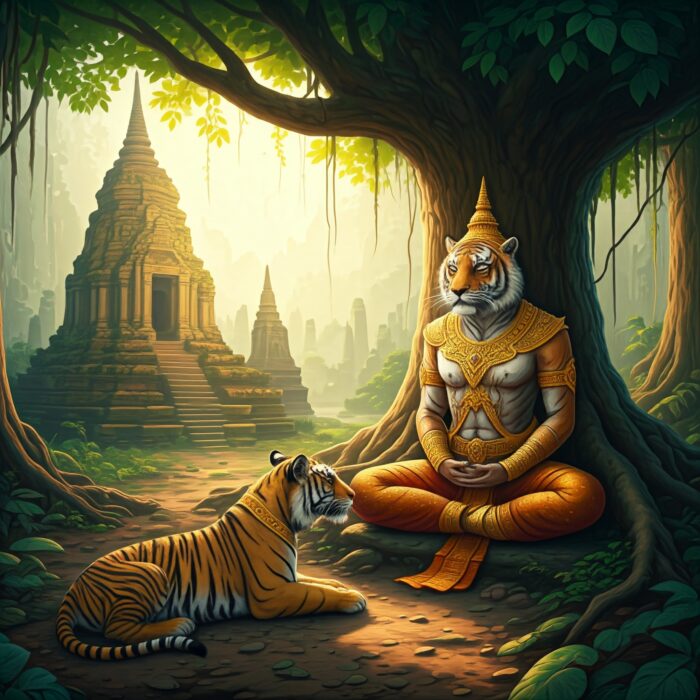
The diversity of skills among the Pra Ruesi reflects a belief in a cosmic organization of knowledge and energy, with each sage responsible for a different area. This allows people to choose which Pra Ruesi to worship according to their needs or profession. For example, doctors and alchemists revere Pra Ruesi Ta Wua, while musicians and performers pay respect to Pra Ruesi Narot. This adaptability shows how folk beliefs remain flexible and accessible in everyday life across different professions.

The Pra Ruesi plays an important role in many fields. In medicine and healing, several sages are said to be masters of herbal medicine and cures, such as Pra Ruesi Ta Fai and Pra Ruesi Narot. In music and performance, the Old Master or Pra Prot Muni is regarded as the great teacher who introduced the arts of singing and dancing, while Pra Ruesi Narot is the patron of music and performance.
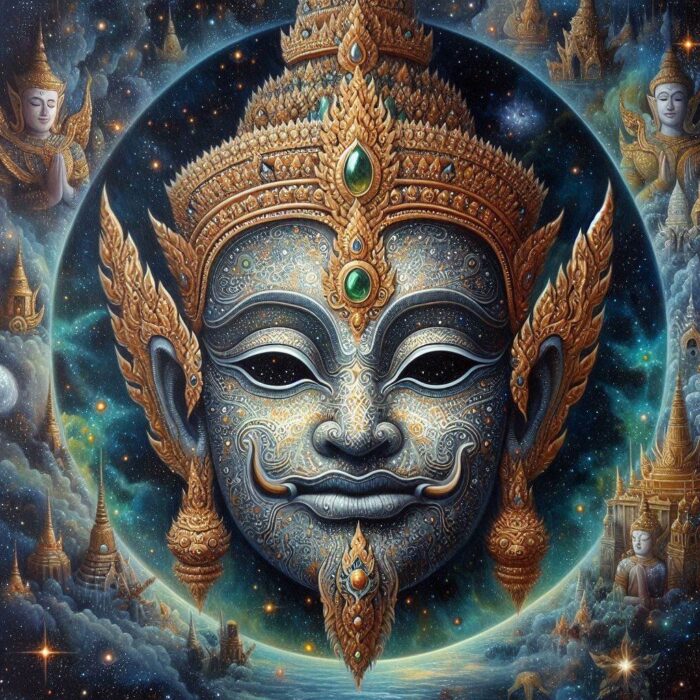
Pra Ruesi Bharata Muni is credited with composing the treatise on dance, including the 108 poses of Shiva. In the magical arts, many Pra Ruesi are seen as masters of spells and charms, with Pra Ruesi Phet Chalukan as the supreme teacher of occult knowledge. In craftsmanship, Pra Ruesi Phet Chalukan, also known as Vishwakarman, is the master of all crafts and the creator of divine weapons.

The role of Pra Ruesi as grand masters in various professions demonstrates the belief that all knowledge and skill have their roots in sacred wisdom, passed down from enlightened teachers. Connecting the Pra Ruesi to different branches of knowledge is a way of honoring and sanctifying those professions in Thai society. The worship of the Old Master is thus a form of worshiping the teacher in the broadest sense, covering arts, sciences, and magical arts, forming the basis of the teacher-respecting tradition that continues to this day.
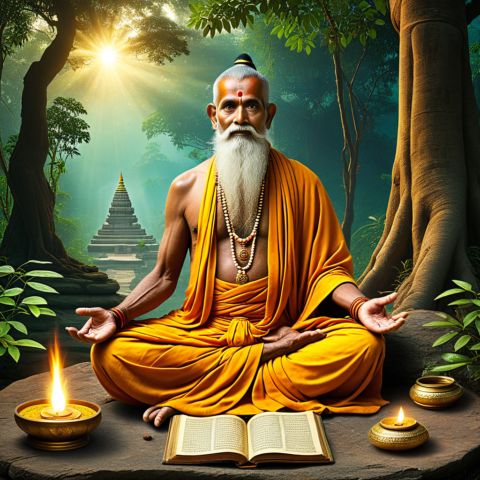
Delving deeper into the legends of individual Pra Ruesi, the story of Pra Ruesi Ta Fai, also known as Gabin Muni, is particularly prominent. Pra Ruesi Ta Fai is a sage of great power whose fame stretches back thousands of years, with some accounts placing him before the birth of the Buddha. He is one of four Pra Ruesi who created the famous Phra Suankor amulet, and some stories say he made the Phra Tha Kradan amulet as well.
Pra Ruesi Ta Fai is said to have a third eye in the middle of his forehead, which, if opened, can unleash a world-consuming fire. Some traditions equate Pra Ruesi Ta Fai with Shiva, as both are depicted with a third eye capable of producing fire.
A well-known legend tells of a king who ruled the city of Si Thep and became a pupil of Pra Ruesi Ta Fai, mastering many skills under his guidance. Trusting his student, Pra Ruesi Ta Fai took the king to see a sacred well. However, the king betrayed his teacher, leading Pra Ruesi Ta Fai to cast a curse by sending poison into a bull, which was then sent into the city of Si Thep, causing its downfall.
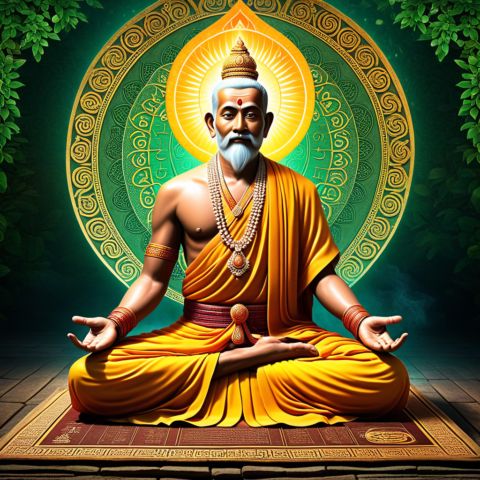
This legend highlights the power of the Pra Ruesi to affect the fate of kingdoms, reflecting the belief in the effectiveness of words and the force of karma in Thai society. The destruction of Si Thep by the curse of Pra Ruesi Ta Fai is a clear example of the power of the Pra Ruesi’s speech, a force born from ascetic practice that can bring both benefit and harm. The story also underscores the importance of loyalty and keeping one’s word as basic virtues, with the downfall of Si Thep serving as a moral lesson about betrayal and consequence.
Comparing the legend of Si Thep’s destruction with archaeological theories reveals how folk explanations and historical evidence coexist to explain the same phenomenon. While the legend attributes the city’s fall to the curse of Pra Ruesi Ta Fai and the poisoned bull, historical and archaeological research points to factors like changes in economy, disease, and environmental shifts. The existence of both explanations shows the many ways humans interpret and make sense of events.
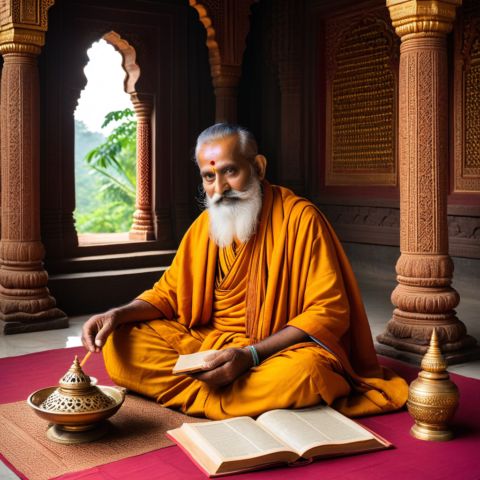
Legends such as the poisoned bull serve to explain disasters in terms of faith and morality, providing lessons and reinforcing values, while archaeological evidence tries to explain through empirical and scientific reasoning. The coexistence of these explanations reflects the ability of society to blend religious belief with worldly interpretations.
The legend of Pra Ruesi Ta Fai and the destruction of Si Thep is just one example among many stories about the Pra Ruesi. Other sages, such as Pra Ruesi Narot, Pra Ruesi Ta Wua, and Pra Ruesi Phet Chalukan, have their own stories and areas of influence. Pra Ruesi Narot is revered as the master of music and performance, Pra Ruesi Ta Wua is honored by doctors and alchemists, and Pra Ruesi Phet Chalukan is the grand master of magical arts and craftsmanship. Each Pra Ruesi represents a different aspect of human endeavor, showing the breadth and depth of the tradition.
The tradition of honoring Pra Ruesi as teachers and patrons of the arts and sciences is central to Thai culture. The annual teacher-respecting ceremony, Wai Khru, is rooted in the belief that all knowledge originates from the Pra Ruesi, who are themselves the first teachers. Offerings and rituals made to the Pra Ruesi are not just acts of respect, but acknowledgments of the sacred origins of knowledge and the importance of gratitude in learning and practice.
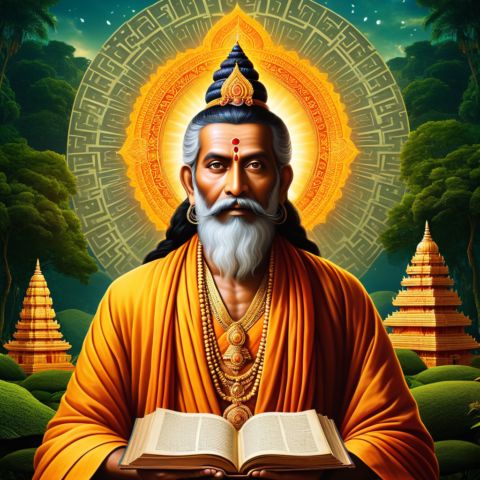
The stories of the Pra Ruesi are not only about their supernatural powers but also about their role as moral guides. In many tales, the Pra Ruesi intervenes to correct injustice, heal the sick, or teach important virtues.
The Pra Ruesi is often depicted as living apart from society, practicing austerity in forests or mountains, but is always ready to help those who seek wisdom or are in need. This dual role as both ascetic and helper reflects a deep value placed on both spiritual attainment and practical compassion.
In the broader context of Southeast Asian civilization, the Pra Ruesi tradition shows the blending of Hindu, Buddhist, and indigenous beliefs. The figure of the Pra Ruesi is at once a product of Indian influence and a uniquely Thai adaptation, evolving over centuries to meet the needs and values of local communities. The flexibility of the tradition allows it to persist even as society changes, with new professions and challenges finding their own Pra Ruesi to honor.
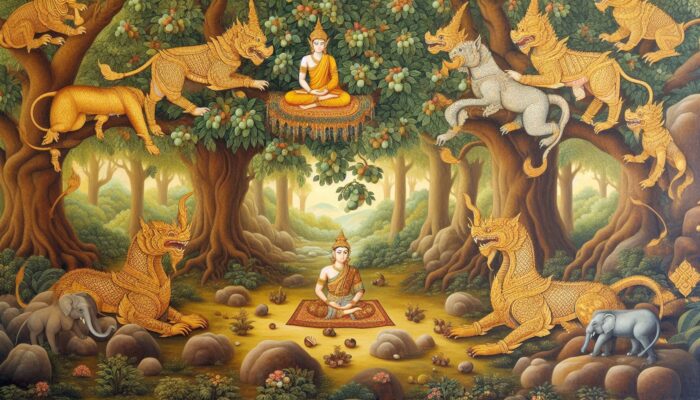
Archaeological discoveries continue to add new dimensions to our understanding of the Pra Ruesi and the societies that revered them. The ruins of Si Thep, for example, reveal a city with complex religious structures, burial sites, and evidence of both prosperity and decline.
Animal skeletons and mass graves found at the site suggest that real disasters, such as epidemics or environmental change, may have inspired the stories of curses and supernatural punishment. Rather than seeing legend and science as opposed, it is possible to view them as complementary ways of understanding the past. The legend gives meaning and moral structure, while archaeology provides tangible evidence and context.

The enduring appeal of the Pra Ruesi lies in their ability to embody both mystery and practicality. They are figures of awe and reverence, but also of guidance and support. Their stories teach that wisdom comes not only from learning but from discipline, compassion, and respect for the sacred. The Pra Ruesi is a reminder that knowledge is both a gift and a responsibility, to be used for the benefit of others.

As Thai society continues to evolve, the tradition of the Pra Ruesi remains a vital thread connecting the present to the past. Whether invoked in rituals, depicted in art, or remembered in stories, the Pra Ruesi continues to inspire faith in the power of wisdom, the reality of magic, and the enduring value of the teacher. The stories of the Pra Ruesi, with their blend of myth and history, remind us that the search for understanding is as old as humanity itself, and that the answers we find often reflect both the world we live in and the world we hope for.
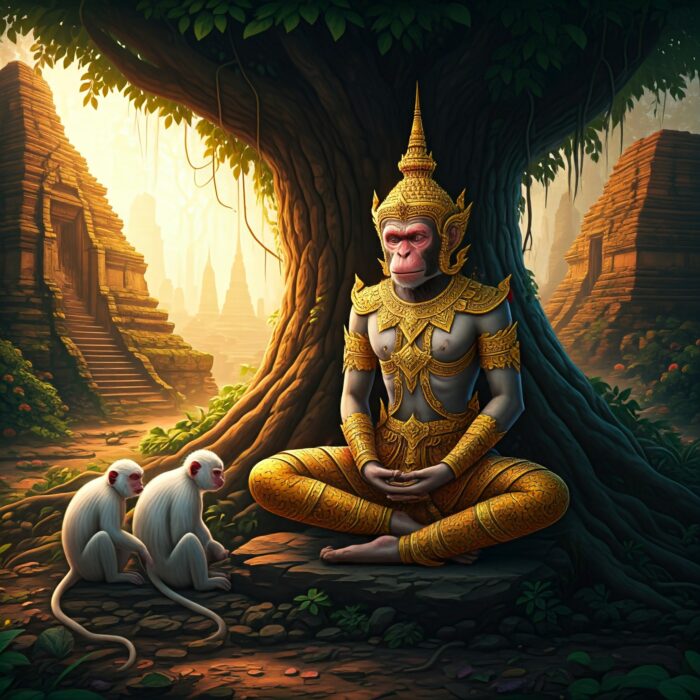
The Pra Ruesi is more than a figure from legend. The Pra Ruesi is a living symbol of the connection between the sacred and the everyday, the seen and the unseen, the known and the mysterious. In honoring the Pra Ruesi, people honor not only the past, but also the ongoing journey of learning, faith, and discovery.
 Subscribe to Buddha Magic TV
Subscribe to Buddha Magic TV